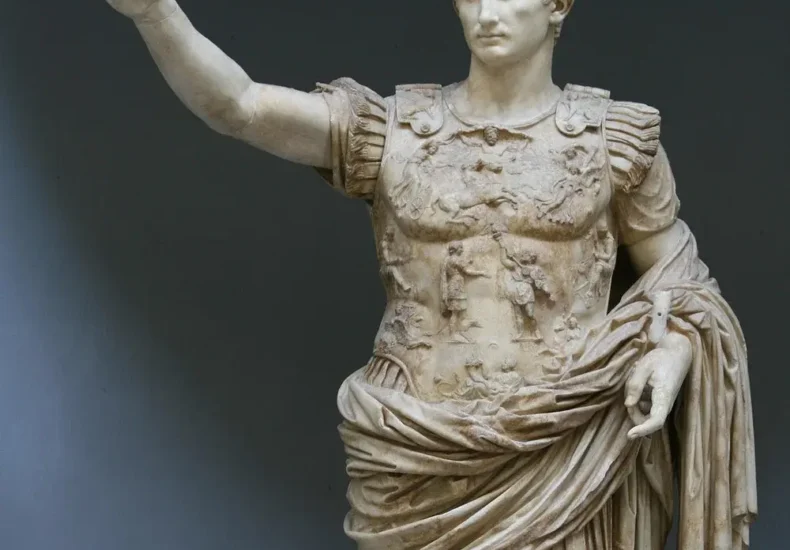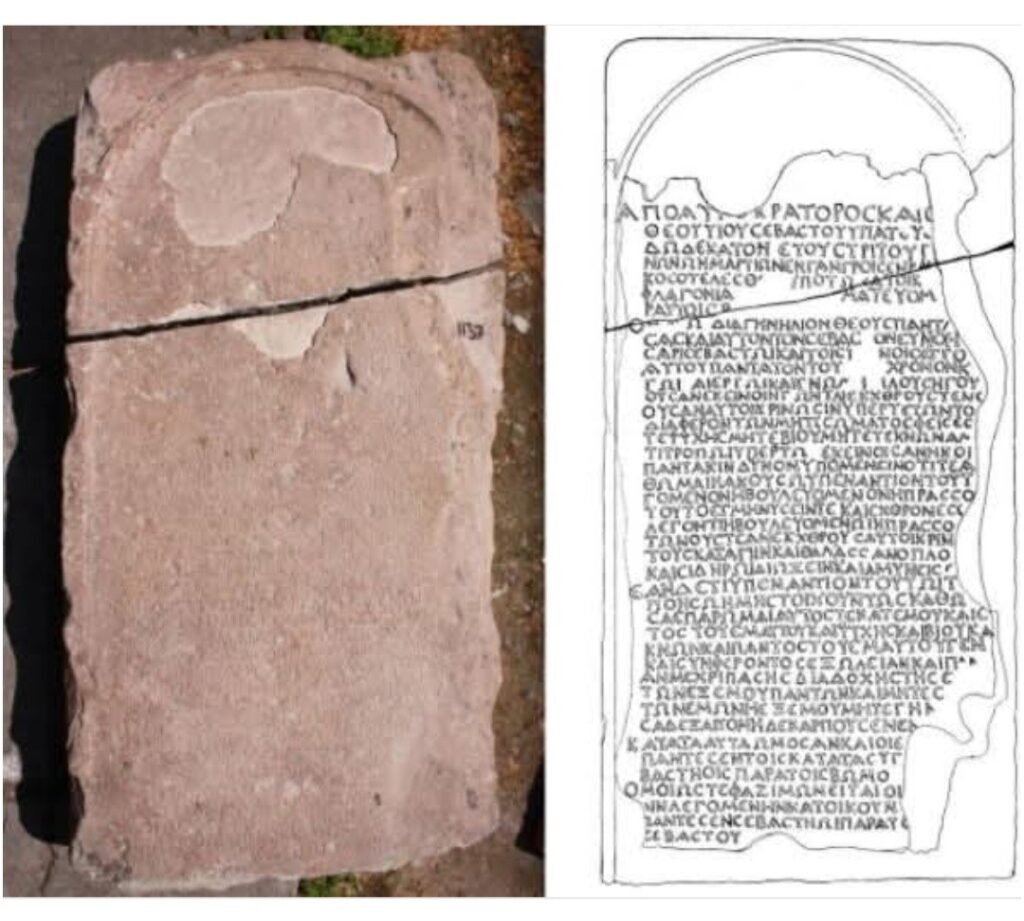
A Pledge of Loyalty in the East of Rome: The Augustus Oath of Anatolia
April 16, 1900… Belgian historian Bishop Franz Cumont of Amasya encountered a stone, a silent witness to history, in the courtyard of an Orthodox Church in Vezirköprü. Cumont’s simple note, “Monday, April 16: Copied an inscription in a Greek Church,” was actually the discovery of a treasure that would illuminate the history of the Roman Provinces of Northern Anatolia. This discovery was no coincidence; Cumont and his brother were traversing the region on horseback, tracing the footsteps of history.
This modest stone in the churchyard held a pledge of allegiance dating back to 3 BC, the era of Emperor Augustus. This oath, expressing the loyalty of the people of Vezirköprü and its surroundings to Augustus, was made on an altar in front of the emperor’s temple. Cumont immediately recognized the importance of this historical document and worked with great enthusiasm to bring it to the attention of the scientific world. “With the help of the goddess who protects epigraphs, fortune smiled upon me,” Cumont expressed his gratitude for this discovery.
After Cumont’s visit, the inscription was moved to the Istanbul Archaeological Museum and recorded with inventory number E1137. This rectangular stone, made of red sandstone, managed to preserve its inscriptions despite the corrosive effects of time. Thanks to Cumont’s meticulous work, this valuable text was published in 1900 and later included in Studia Pontica III in 1910.
The oath inscription was translated by Professor Murat Arslan and his assistant Elif Alten as follows:
“This oath was taken in the early days of March in the 3rd year during the 12th consulship of the divine Emperor Caesar Augustus, son of Augustus, by those who colonized Paphlagonia in the Gangra Castle and the Roman merchants with them.

I swear/oath to Zeus, Ge, Helios, all gods/goddesses, and Augustus himself, that throughout my life I will show my goodwill to Caesar Augustus, his children, and grandchildren in word, deed, and thought, to accept those they choose as friends as friends, and those they choose as enemies as enemies, and that I will spare neither my body nor my soul nor my children for things related to them, and that I will endure all dangers belonging to them in every situation. If I hear or become aware that something is said or planned or neglected against these as enemies, I swear/oath that I will reveal it and be an enemy to the one who says or plans or neglects one of these. I swear/oath that I will pursue and repel those they decide as enemies with weapons and iron sword both on land and at sea. If I go against this oath I have taken or do not comply with this oath I have taken in this way, I curse/damn my soul, my body, my life, my children, and all my lineage, may destruction and annihilation be with all my successors and all my lineage to come from me, may neither the land nor the sea accept my body nor the bodies of those to come from me, may they not yield them produce.
They swore on these, and everyone in the countryside swore throughout the province in Sebasteia, near the altars of Augustus.
The Phazimonitis people, who colonized the city now called Neapolis, also swore near the altar of Augustus together with everyone in Sebasteia.”
This inscription not only serves as a pledge of allegiance but also sheds light on the social and political structure of that era. This text, in which Roman merchants in Gangra Castle and the people of Paphlagonia expressed their loyalty to Augustus, also bears the character of a treaty. The people swore to remain loyal to the emperor, his children, and grandchildren, to accept their friends as friends and their enemies as enemies, and to sacrifice their lives if necessary. This oath would manifest itself not only in words but also in deeds.
The last part of the inscription states that the people in the countryside and the people of Neapolis (present-day Vezirköprü) swore near the altars of Augustus. This shows that the oath was taken not only by a group of people but by all the people of the region.
Cover Image Credit: Augustus of Prima Porta, statue of the emperor Augustus in Museo Chiaramonti, Vatican, Rome. Photo. World History
You may also like
- A 1700-year-old statue of Pan unearthed during the excavations at Polyeuktos in İstanbul
- The granary was found in the ancient city of Sebaste, founded by the first Roman emperor Augustus
- Donalar Kale Kapı Rock Tomb or Donalar Rock Tomb
- Theater emerges as works continue in ancient city of Perinthos
- Urartian King Argishti’s bronze shield revealed the name of an unknown country
- The religious center of Lycia, the ancient city of Letoon
- Who were the Luwians?
- A new study brings a fresh perspective on the Anatolian origin of the Indo-European languages
- Perhaps the oldest thermal treatment center in the world, which has been in continuous use for 2000 years -Basilica Therma Roman Bath or King’s Daughter-
- The largest synagogue of the ancient world, located in the ancient city of Sardis, is being restored











Leave a Reply